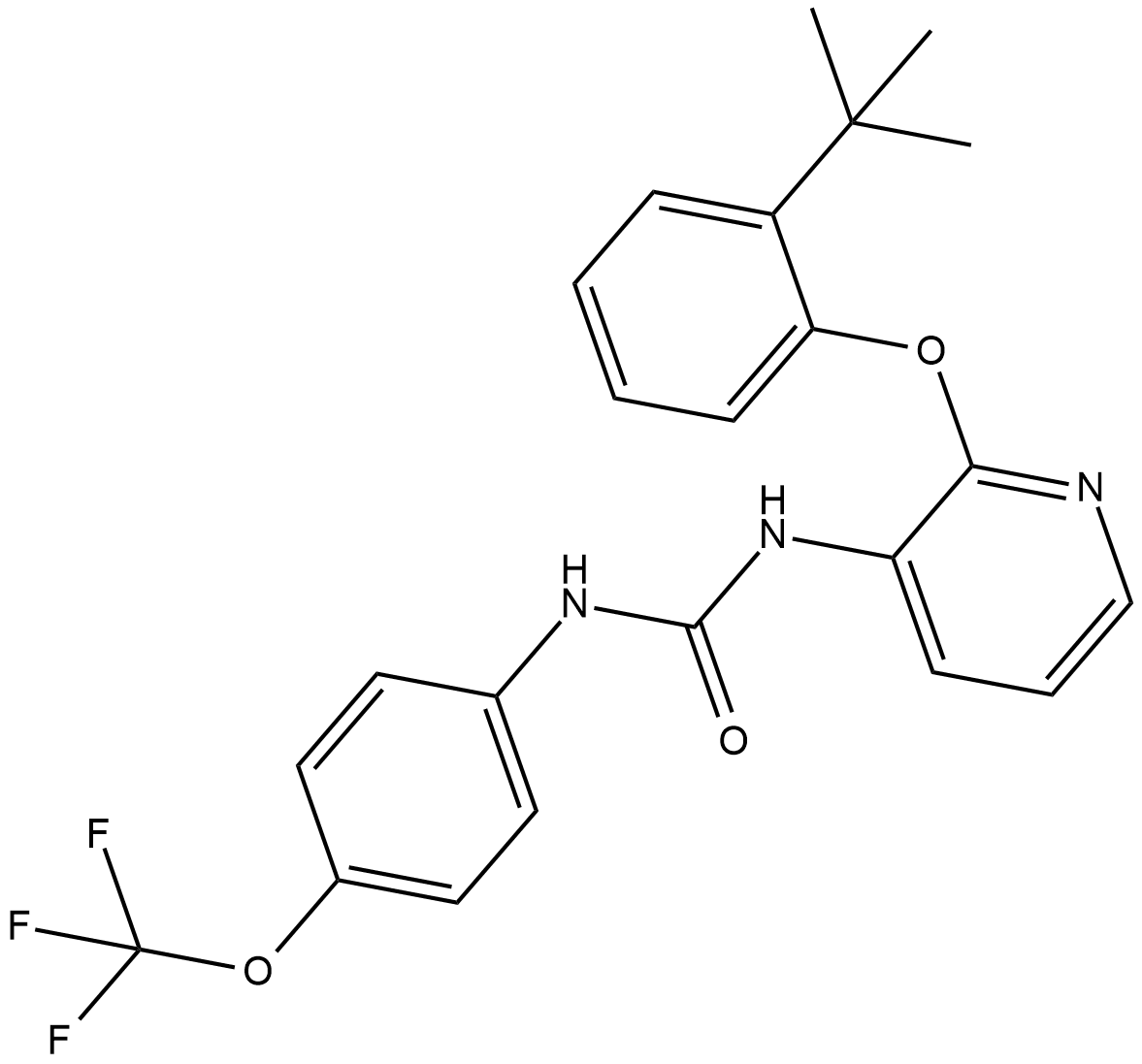BPTU (Synonyms: BMS-646786) |
| Katalog-Nr.GC19081 |
BPTU (BMS-646786) ist ein nicht-nukleotidischer P2Y1-Rezeptor-Alloster-Antagonist mit antithrombotischer AktivitÄt.
Products are for research use only. Not for human use. We do not sell to patients.

Cas No.: 870544-59-5
Sample solution is provided at 25 µL, 10mM.
BPTU is a novel P2Y1 allosteric antagonist.
BPTU blocks the supramaximal fast inhibitory junction potentials (fIJP) in a concentration-dependent manner both in the rat and mouse colon (P<0.0001 for both). The EC50 of BPTU is approximately 0.3 uM and 0.06 uM for the rat and mouse colon, respectively. In the rat colon, addition of the P2Y agonist ADPβS at 10 uM significantly reduces spontaneous contractions to a 43.2±13.4% (N=5) (P=0.0002), and this reduction is blocked by 15 min incubation with BPTU at a concentration of 3 uM (93.3±5.1%). Similar results are obtained in the murine colon where ADPβS at 10 uM reduces the area under the curve (AUC) of contractions to a 15.8±5.1% (N=4) (P<0.0001) and its effect is reversed with BPTU at 3 uM (82.7±3.6%). Addition of MRS2365, a selective P2Y1 agonist, at a concentration of 5 uM significantly reduces spontaneous contractions to a 21.2±4.8% (N=5) (P=0.0002) in the murine colon, and this reduction is blocked by 15 min incubation with BPTU at a concentration of 3 uM (93.1±3.8%). The blockage of the MRS2365-induced response by BPTU at 3 uM also occurs in control conditions (N=5) (10.2±5.5% vs. 86.7±5.0%)[1].
Uptake of BPTU from the peritoneal cavity is relatively rapid. Blood boron levels are maximal within 1 h after administration. After only 1 h, a boron tumor-to-blood ratio above 1 is found for BPTU in pigmented tumors, which is indicative of drug retention. This is not seen in the non-pigmented tumor variant, in which tumor boron levels closely follow blood levels. Up to 24 h, Borocaptate sodium (BSH) exhibits no selective retention in either tumor, but achieves higher maximum tumor boron concentrations than BPTU as a result of the administration of higher amounts of boron. During the tissue distribution phase, liver-to-kidney boron concentration ratios range from 2 to 4 for BSH and from 0.5 to 1 for BPTU[2].
References:
[1]. Maé N, et al. BPTU, an allosteric antagonist of P2Y1 receptor, blocks nerve mediated inhibitory neuromuscular responses in the gastrointestinal tract of rodents. Neuropharmacology. 2016 Nov;110(Pt A):376-385.
[2]. Verrijk R, et al. Pharmacokinetics in melanoma-bearing mice of 5-dihydroxyboryl-6-propyl-2-thiouracil (BPTU), a candidate compound for boron neutron capture therapy. Br J Cancer. 1994 Apr;69(4):641-7.
Average Rating: 5 (Based on Reviews and 22 reference(s) in Google Scholar.)
GLPBIO products are for RESEARCH USE ONLY. Please make sure your review or question is research based.
Required fields are marked with *




















